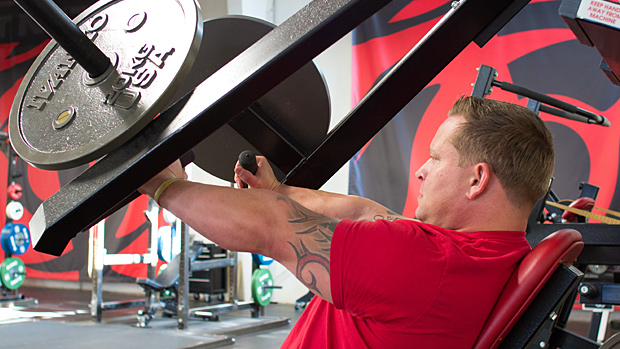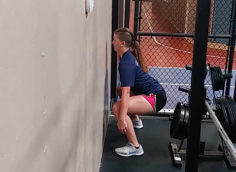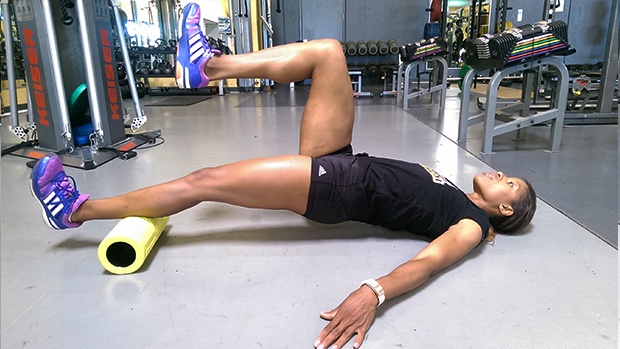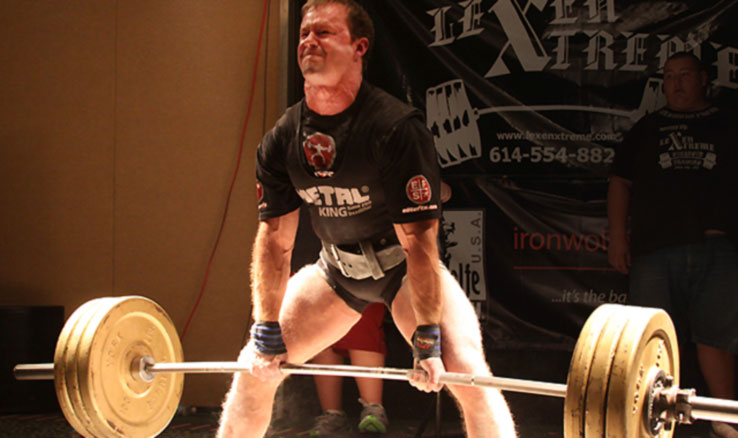Some recommendations in strength and bodybuilding have stood the test of time. But those recommendations often evolve into absolute rules – rules that are ingrained deeply in the minds of lifters for decades.
The fear of breaking these rules will often become an issue, even though they were originally just meant to be guidelines. But general recommendations don't always apply under every circumstance. Usually they're given to beginners to simplify their training and give them an easy understanding of basic principles.
But once you've mastered these principles, who's to say there's no benefit in breaking the rules (recommendations) when the outcome will benefit you the most? Here are three to consider breaking once you're no longer a newbie.

Why the rule was created: Multi-joint compound barbell exercises are often done in the 1-8 rep range. Any more than that and you've entered a zone where social media experts start exaggerating about 10-rep deadlifts snapping discs or 15-rep bench presses blowing up your rotator cuff.
Why you should break it: Never leaving the lower rep ranges for compound movements will eventually cause hypertrophy (growth) plateaus.
We now know that for muscle growth it's best to train in a variety of rep ranges. Barbells might be great for training in the lower rep ranges, but pushing the limits and going for higher reps is perfectly fine too, given you adjust the load and you program them intelligently. With these parameters they're no more dangerous than standard barbell work for doubles and triples.
A closer look: Think of 20-rep squat workouts as well as the infamous NFL 225 pound bench press test. These aren't just things to try out as a challenge, but instead can be incorporated into your program strategically. You'll receive massive time under tension among many muscles, get to test your conditioning, and pack on lots of volume to build muscle.
We know compound movements and volume are great for hypertrophy, but why is it so rooted in our minds that it's wrong to combine the two? As a beginner you can get away with doing compound movements only in lower rep ranges, but as you advance in load, staying at lower rep ranges isn't ideal.
Here's an example:
A beginner lifter's bench press progression:
- Week 1: 5 x 5 working sets of 95 pounds (2375 total volume load)
- Week 2: 5 x 5 working sets of 115 pounds (2875 total volume load)
- Week 3: 5 x 5 working sets of 135 pounds (3375 total volume load)
- Week 4: 5 x 5 working sets of 145 pounds (3625 total volume load)
- Week 5: 5 x 5 working sets of 155 pounds (3875 total volume load)
- Week 6: 5 x 5 working sets of 165 pounds (4125 total volume load)
- 6 week total accumulated volume load: 20,250 pounds
This is a typical beginner progression. They're able to slap on more weight each week while maintaining the same reps/sets because the load isn't extremely demanding yet. As a beginner does this with their multi-joint progression, they can still build significant muscle because the total volume increases are significant throughout their program.
A more advanced lifter's bench press progression:
- Week 1: 5 x 5 working sets of 210 pounds (5250 total volume load)
- Week 2: 5 x 3 working sets of 225 pounds (3375 total volume load)
- Week 3: 5 x 1 working sets of 240 pounds (1200 total volume load)
- Week 4: 5 x 5 working sets of 225 pounds (5625 total volume load)
- Week 5: 5 x 3 working sets of 240 pounds (3600 total volume load)
- Week 6: 5 x 1 working sets of 255 pounds (1275 total volume load)
- 6 week total accumulated volume load: 20,325 pounds
An advanced lifter, who's lifting significantly more weight than a beginner, has to adjust sets/reps to continue to make load increases throughout a program. He's still able to make increases in load by the end of the program, but notice that his total accumulated volume load after 6 weeks is barely more than when he first began lifting, even though the bar is much heavier.
This is why, once you're past the beginner stage, it's not only wise but pretty much necessary to include higher reps in compound movements. You'll be able to accumulate significantly more volume for muscle growth, and you'll be more likely to keep the hypertrophy gains coming.

Why the rule was created: Beginners should go slow and controlled on machines because they're still learning how to perform basic movement patterns. Telling them to explode on a pec deck at heavy loads is irresponsible.
Why you should break it: There's no such law that says you can't use machines for lower reps. There's also no law forcing you to always go slow and controlled on machines. And once you've mastered basic movement patterns, doing explosive heavy reps on machines is no longer dangerous. If you think about it, it can't be more dangerous than doing free weight movements in the same manner.
A closer look: There are many benefits to training explosive heavy reps on machines. Here are six:
- New Stimulus: Any new stimulus will trigger muscle growth. Imagine how foreign a stimulus like heavy machine work will be after years of only doing light and high reps on them.
- Muscle Fiber Recruitment: Heavy and powerful reps recruit the most high threshold motor units. These have the most potential for growth.
- Less Neural Fatigue: Machine work is less neurologically demanding since your grip, core, and stabilizing needs are low. This allows you to get additional heavy explosive work in without putting recovery at risk.
- Safer Way to Build Maximum Strength: If you don't have the mobility to overhead press or your low back cries for mercy during heavy squats, then machines still allow you to train heavy, while minimizing the risk.
- Increase Muscular Power: Using machines disengages the need for core stabilization. This allows you to isolate the targeted muscles, and by training explosively you'll be improving the contractile force unhindered without the core giving out first.
- Adherence: Switching things up and breaking common rules like this keeps training fresh, which can boost enjoyment and adherence.
Here are two machines I've found to be quite useful for training heavy.
Overhead Press Machine
Single-Arm Low Cable Press
Why the rule was created: Going through a full range of motion is most optimal for hypertrophy and forces beginners to master basic control and ensure adequate mobility.
Why you should break it: Partials shouldn't make up the majority of your training, but supplementing with them can be wildly effective.
A closer look: Some exercises do produce greater hypertrophy when cutting the range of motion. This is because a full range can significantly unload certain portions of the lift like lying skull crushers. (1)

They also allow for additional volume by extending a set, further stimulating muscle growth. They can also force you to train a specific range of motion that might be a sticking point.
If you're having a hard time getting a particular muscle to grow you can use partials to activate and emphasize a specific muscle on a compound lift. According to Christian Thibaudeau, "Do this by keeping reps only in the range of motion where the target muscle is doing most of the work by itself. You want to avoid going into the transition zones where other muscles start to take over so that maximum tension is maintained on the target muscle."
If you're too caught up in always lifting in a full range, you're leaving gains on the table. When you mature in your training, adding in partials is exactly what you need to induce more growth or break through a sticking point.
Question the things that people deem taboo so that you know how to continue making progress... even in unconventional ways.
Sure, if you're a beginner, you shouldn't be doing 20-rep squat challenges, maxing out on the leg press, or doing partial curls. But once you're past the beginner stage, it can pay off to get rebellious at times. The more you train, the more likely it is that you'll find other instances where breaking the rules often benefits you more than following them.
So give it try. Do some high-rep barbell work. Get explosive or heavy on machines. And add in some half reps when your body won't allow for anymore full range reps. You may be surprised at the results.
- Goto M et al. Partial range of motion exercise is effective for facilitating muscle hypertrophy and function via sustained intramuscular hypoxia in young trained men. J Strength Cond Res. 2019 May;33(5):1286-1294. PubMed.





